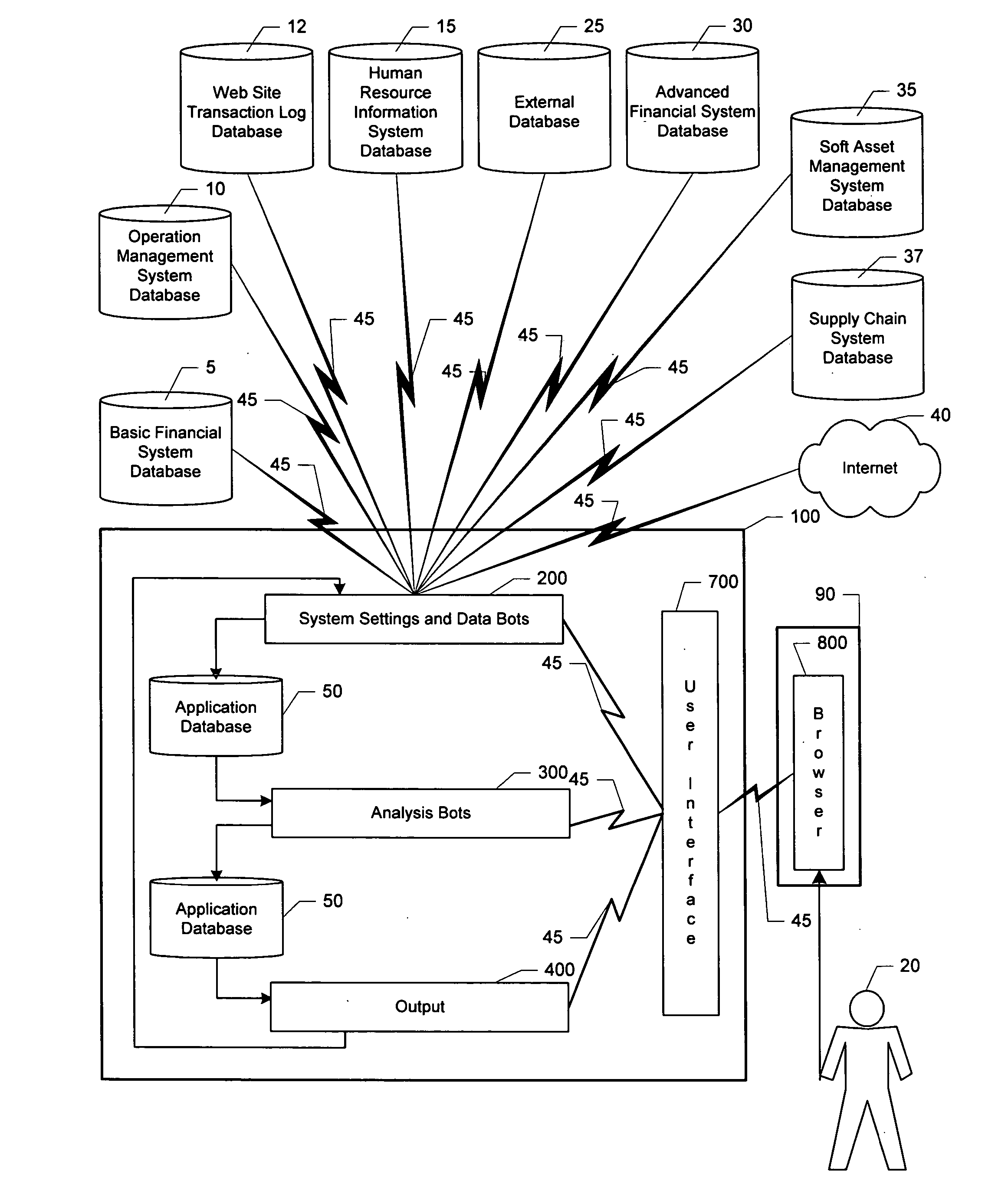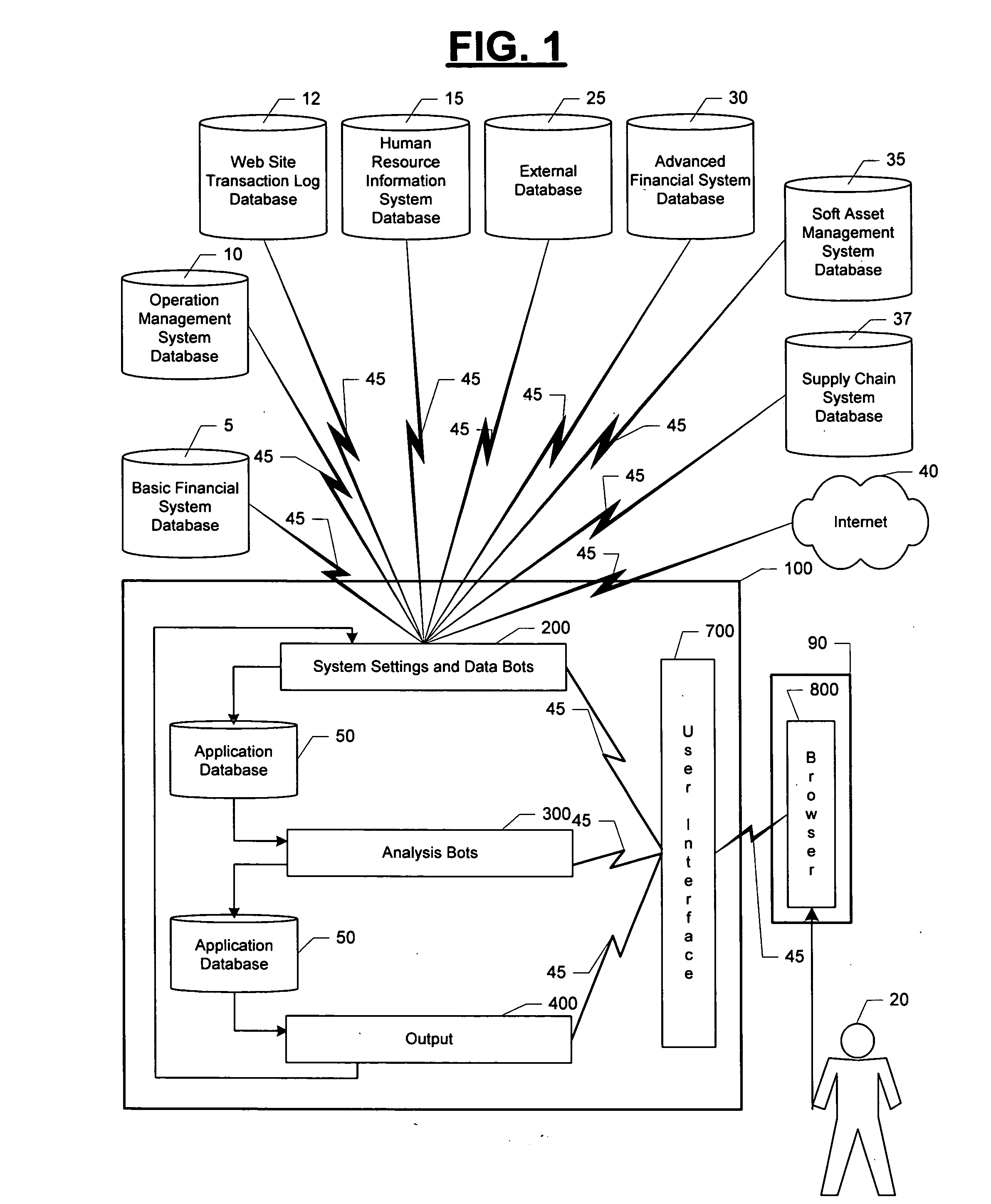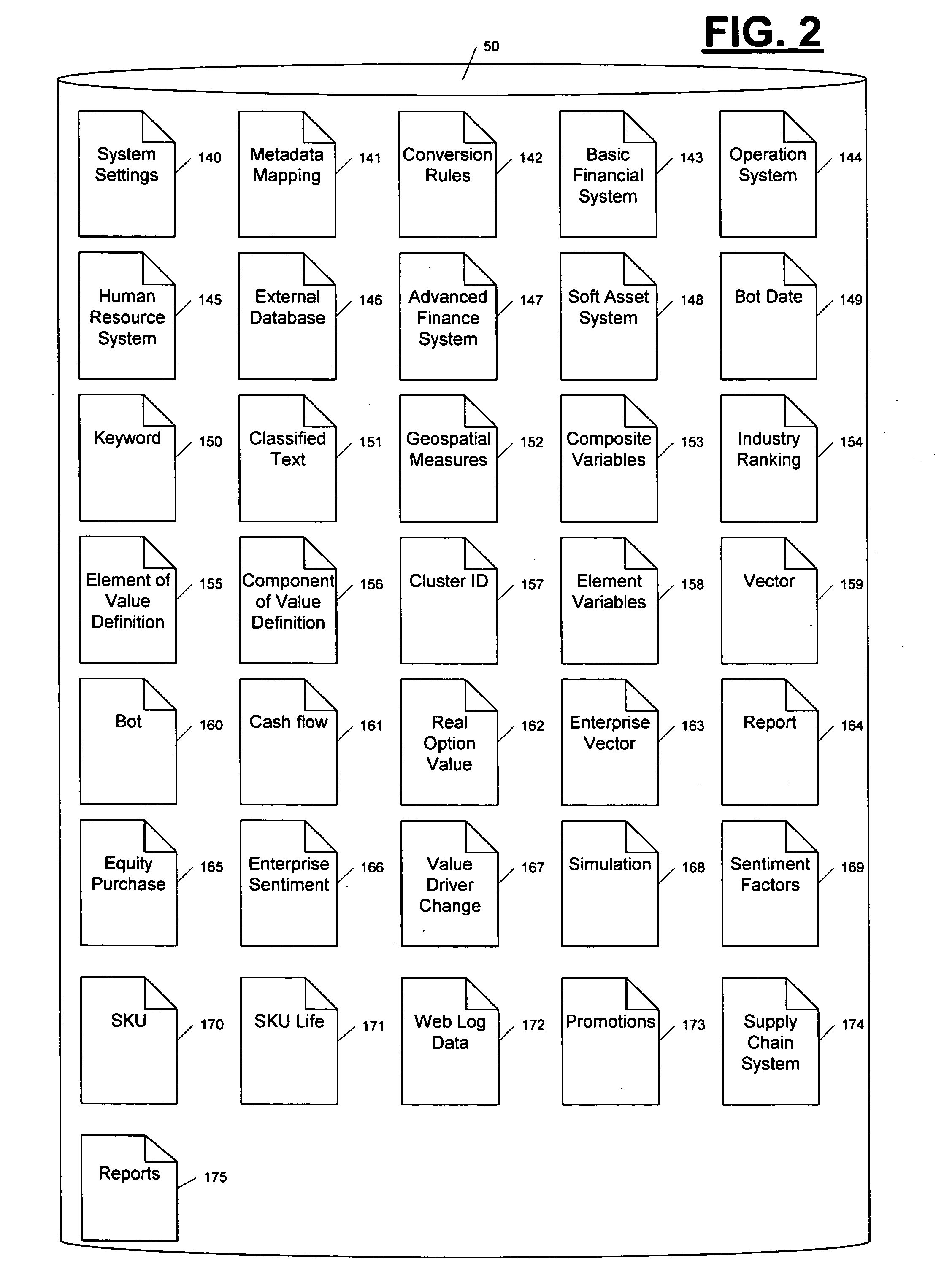Method of and system for defining and measuring the real options of a commercial enterprise
a commercial enterprise and real option technology, applied in the field of business valuation, can solve the problems of inability to provide a framework for inability to achieve the effect of analyzing the continued progress of traditional methods, and inability to achieve the effect of generating the effect of generating the effect of generating the effect of generating the effect of generating the effect of generating the effect of generating the effect of generating the effect of generating the effect of generating the effect o
- Summary
- Abstract
- Description
- Claims
- Application Information
AI Technical Summary
Benefits of technology
Problems solved by technology
Method used
Image
Examples
Embodiment Construction
[0040]FIG. 1 provides an overview of the processing completed by the innovative system for defining and measuring the elements of value and real options of a commercial enterprise. In accordance with the present invention, an automated method of and system (100) for business valuation, activity analysis and promotion coordination is provided. Processing starts in this system (100) with the specification of system settings and the initialization and activation of software data “bots” (200) that extract, aggregate, manipulate and store the data and user (20) input required for completing system processing. This information is extracted via a network (45) from: a basic financial system database (5), an operation management system database (10), a web site transaction log database (12), a human resource information system database (15), an external database (25), an advanced financial system database (30), a soft asset management system database (35), a supply chain system database (37)...
PUM
 Login to View More
Login to View More Abstract
Description
Claims
Application Information
 Login to View More
Login to View More - R&D
- Intellectual Property
- Life Sciences
- Materials
- Tech Scout
- Unparalleled Data Quality
- Higher Quality Content
- 60% Fewer Hallucinations
Browse by: Latest US Patents, China's latest patents, Technical Efficacy Thesaurus, Application Domain, Technology Topic, Popular Technical Reports.
© 2025 PatSnap. All rights reserved.Legal|Privacy policy|Modern Slavery Act Transparency Statement|Sitemap|About US| Contact US: help@patsnap.com



